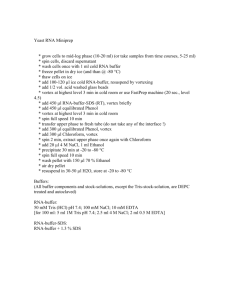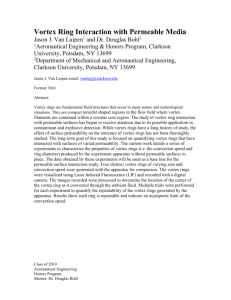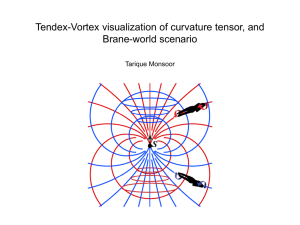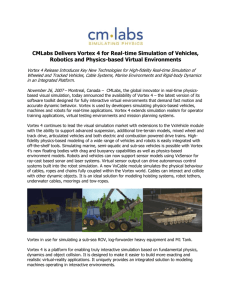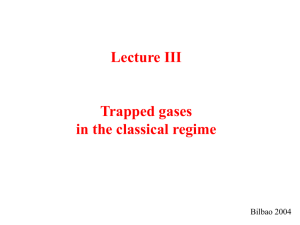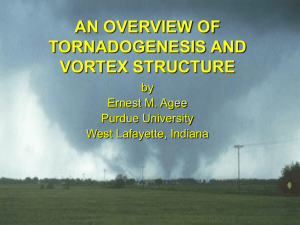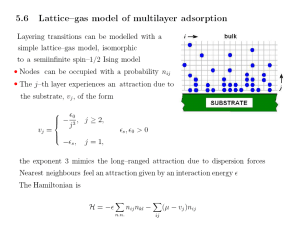the purification of gases using high-speed vortical flows
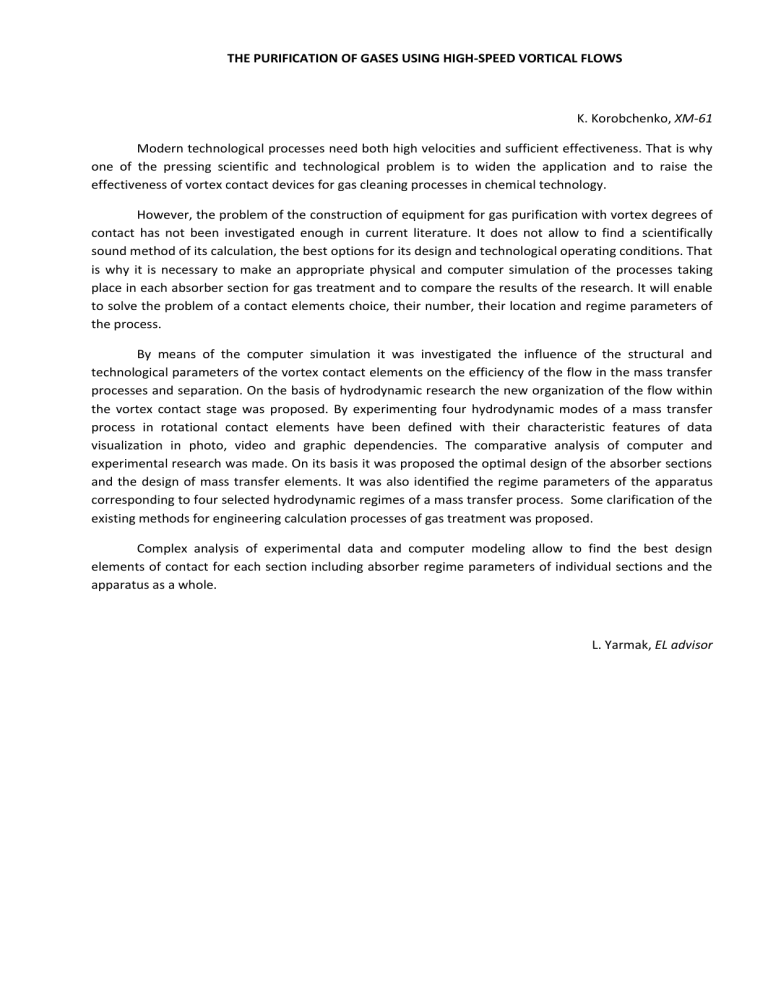
THE PURIFICATION OF GASES USING HIGH-SPEED VORTICAL FLOWS
K. Korobchenko, XM-61
Modern technological processes need both high velocities and sufficient effectiveness. That is why one of the pressing scientific and technological problem is to widen the application and to raise the effectiveness of vortex contact devices for gas cleaning processes in chemical technology.
However, the problem of the construction of equipment for gas purification with vortex degrees of contact has not been investigated enough in current literature. It does not allow to find a scientifically sound method of its calculation, the best options for its design and technological operating conditions. That is why it is necessary to make an appropriate physical and computer simulation of the processes taking place in each absorber section for gas treatment and to compare the results of the research. It will enable to solve the problem of a contact elements choice, their number, their location and regime parameters of the process.
By means of the computer simulation it was investigated the influence of the structural and technological parameters of the vortex contact elements on the efficiency of the flow in the mass transfer processes and separation. On the basis of hydrodynamic research the new organization of the flow within the vortex contact stage was proposed. By experimenting four hydrodynamic modes of a mass transfer process in rotational contact elements have been defined with their characteristic features of data visualization in photo, video and graphic dependencies. The comparative analysis of computer and experimental research was made. On its basis it was proposed the optimal design of the absorber sections and the design of mass transfer elements. It was also identified the regime parameters of the apparatus corresponding to four selected hydrodynamic regimes of a mass transfer process. Some clarification of the existing methods for engineering calculation processes of gas treatment was proposed.
Complex analysis of experimental data and computer modeling allow to find the best design elements of contact for each section including absorber regime parameters of individual sections and the apparatus as a whole.
L. Yarmak, EL advisor


